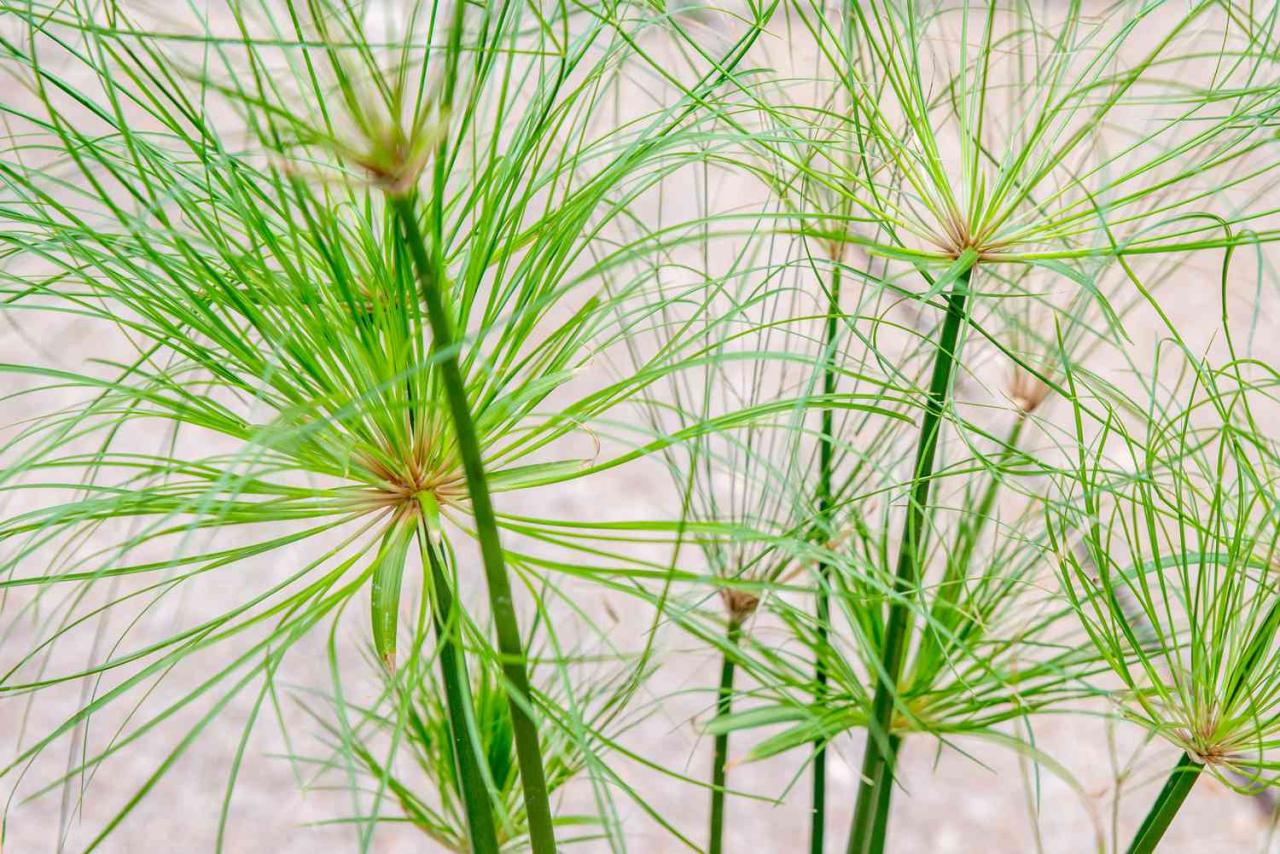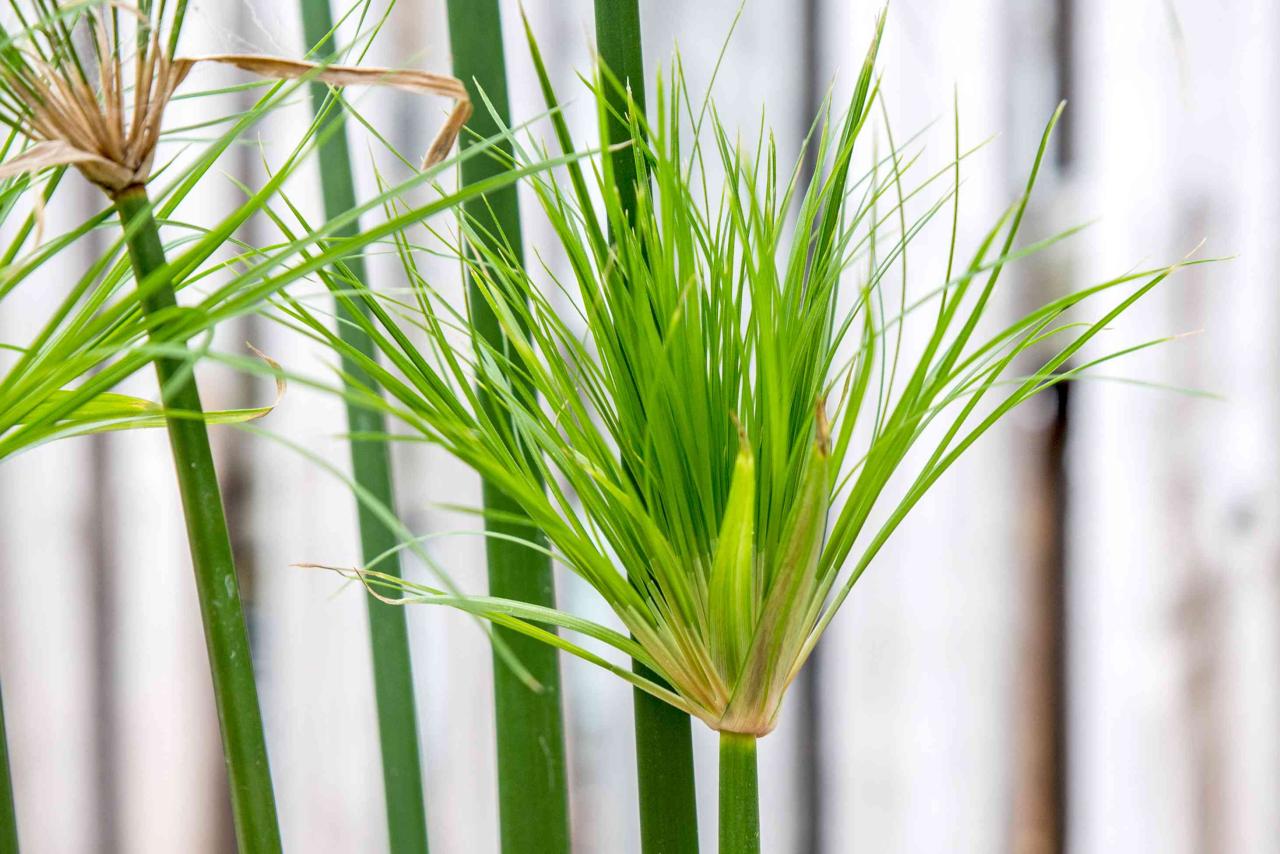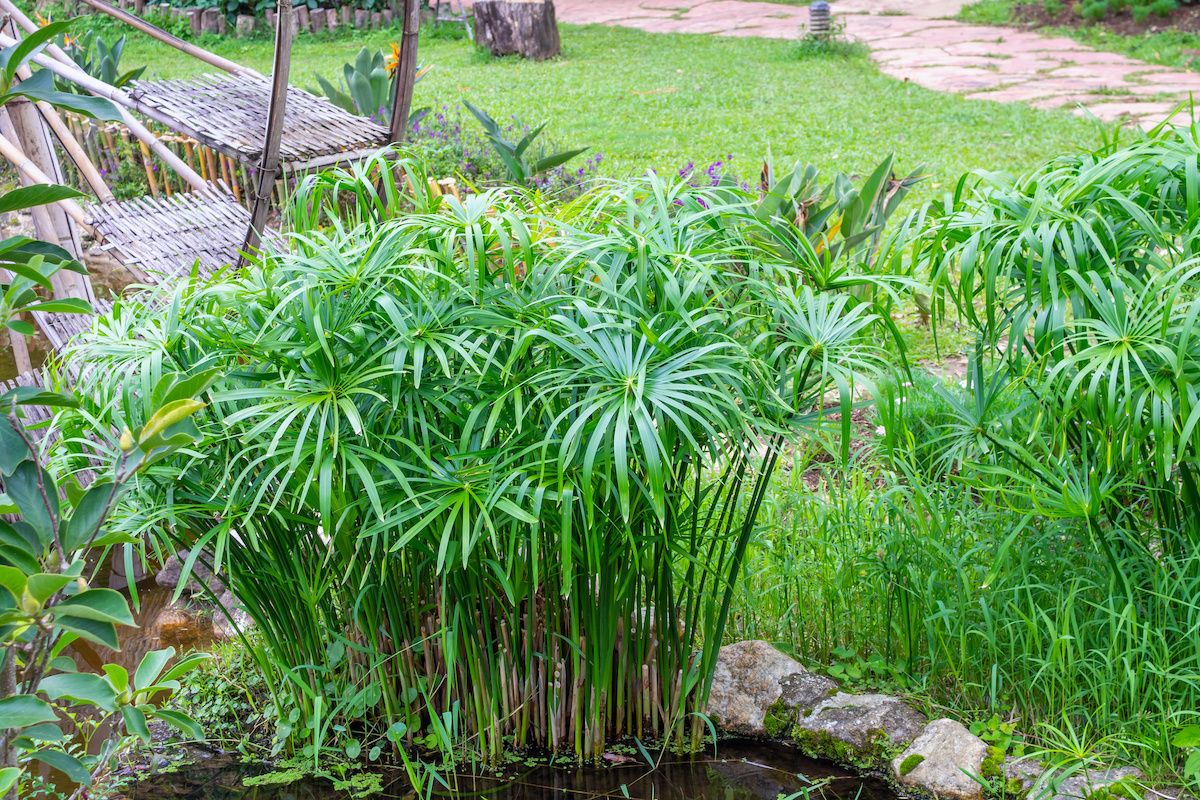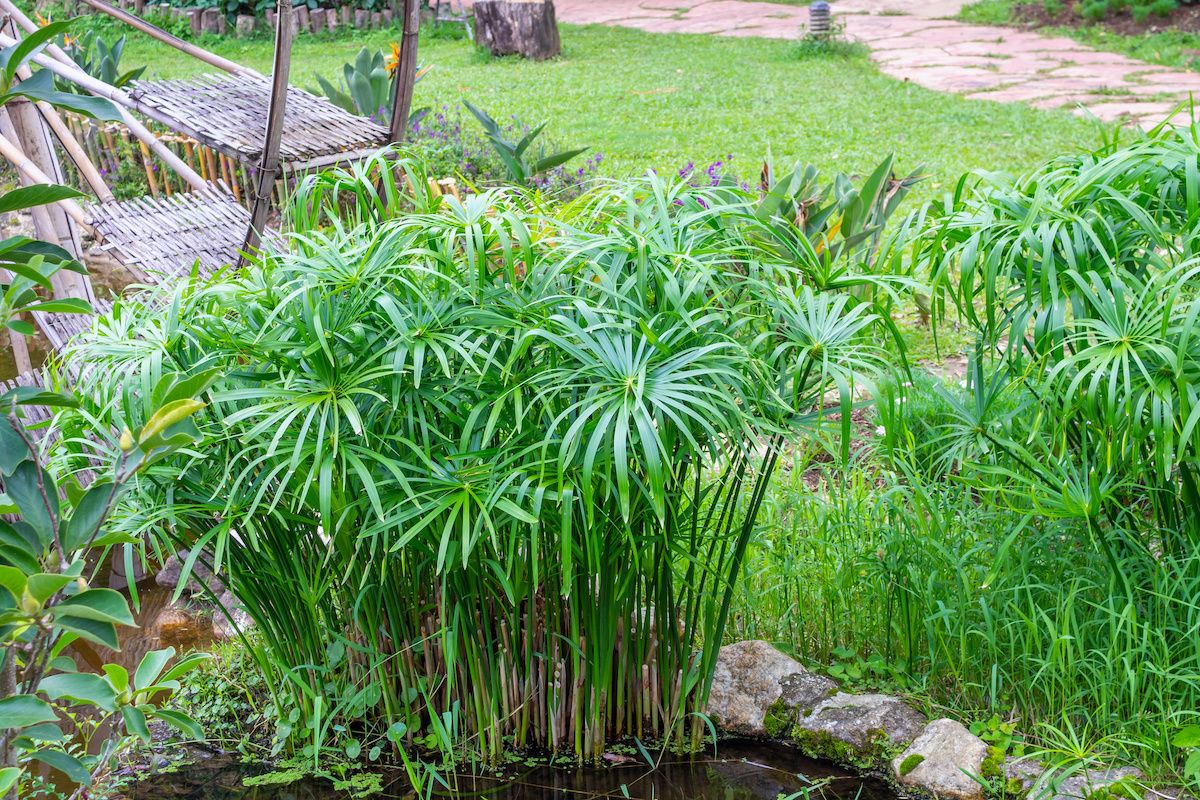Papyrus Plant Benefits: How to Utilize This Herb for a Unique and Elegant Garden, the papyrus plant, with its rich history and striking appearance, offers a captivating addition to any garden. Native to the wetlands of Africa, this remarkable plant has been revered for centuries, playing a vital role in ancient Egyptian civilization.
From its use in papermaking to its symbolic significance, the papyrus plant holds a unique place in human history. Today, it continues to inspire awe and appreciation for its versatility and beauty, making it a perfect choice for gardeners seeking a touch of the exotic and a unique aesthetic.
The papyrus plant’s adaptability allows it to thrive in various environments, making it a suitable choice for a wide range of garden styles. Its towering stalks and feathery plumes add a sense of grandeur and drama, while its lush foliage provides a tranquil ambiance.
The papyrus plant’s ability to attract beneficial insects further enhances its appeal, promoting a healthy ecosystem within your garden. This article will explore the numerous benefits of incorporating papyrus plants into your garden, providing a comprehensive guide on cultivation, creative uses, and the plant’s fascinating history and modern applications.
Introduction to the Papyrus Plant
The papyrus plant, scientifically known asCyperus papyrus*, is a tall, elegant perennial sedge native to the Nile Delta region of Africa. Its history is deeply intertwined with ancient civilizations, particularly in Egypt, where it played a crucial role in various aspects of life.
The papyrus plant’s unique characteristics and adaptability have contributed to its enduring legacy and continued presence in gardens worldwide.
The Papyrus Plant’s Historical Significance
The papyrus plant’s significance in ancient Egypt is undeniable. It was a vital resource used for various purposes, from crafting paper to building materials. The Egyptians utilized the plant’s long, fibrous stems to create papyrus sheets, a precursor to modern paper.
These sheets were used for writing, recording important documents, and creating religious texts. The papyrus plant’s versatility extended beyond paper production. Its stems were also used for building boats, mats, baskets, and sandals, highlighting its importance in everyday life.
Adaptability and Growth
The papyrus plant thrives in a variety of environments, showcasing its adaptability. It prefers moist, sunny locations and can tolerate even shallow water. Its natural habitat is along the banks of rivers, lakes, and marshes, where it forms dense stands.
The papyrus plant’s ability to thrive in diverse environments, from tropical to subtropical regions, has contributed to its global distribution.
Unique Characteristics
The papyrus plant’s unique characteristics make it an attractive addition to any garden. It features a distinctive, umbrella-like appearance, with tall, slender stems topped with clusters of feathery leaves. The plant’s graceful form adds a touch of elegance and a tropical ambiance to gardens and landscapes.
Papyrus Plant Benefits for the Garden

The papyrus plant, with its unique and elegant appearance, offers a multitude of benefits for gardeners seeking to enhance the aesthetic appeal and ecological balance of their outdoor spaces. Its adaptability and low-maintenance nature make it an attractive choice for both seasoned and novice gardeners.
Aesthetic Appeal and Tranquility
The papyrus plant’s distinctive upright stalks topped with feathery plumes create a striking visual impact in any garden setting. Its graceful silhouette and vibrant green foliage add a touch of tropical elegance, evoking a sense of serenity and tranquility. Its height and airy form can be used to create visual interest and verticality, especially in smaller gardens or containers.
The plant’s versatility allows it to be incorporated into various garden styles, from contemporary to traditional, adding a unique and sophisticated element to any landscape.
Attracting Beneficial Insects
The papyrus plant plays a crucial role in attracting beneficial insects, such as pollinators and predators, to the garden. These insects contribute to the overall health and vitality of the garden ecosystem by aiding in pollination and controlling pest populations.
The plant’s feathery plumes provide shelter and nesting sites for beneficial insects, encouraging them to establish a presence within the garden. This natural pest control strategy helps to minimize the need for chemical interventions, promoting a more sustainable and environmentally friendly gardening approach.
Shade and Ambiance
The papyrus plant’s tall, slender stalks and lush foliage can create a sense of shade and privacy in a garden setting. This is particularly beneficial in areas with high sun exposure or where a sheltered retreat is desired. The plant’s ability to filter sunlight can also help to reduce glare and create a more tranquil ambiance, enhancing the overall relaxation and enjoyment of the garden space.
Growth Habits and Maintenance
The papyrus plant is a fast-growing species, requiring ample space to thrive. Its rapid growth rate allows it to quickly fill in empty spaces and create a lush, tropical effect. While the plant requires regular watering, especially during hot and dry periods, it is relatively low-maintenance compared to other popular garden plants.
The papyrus plant’s ability to tolerate a wide range of growing conditions, including full sun to partial shade, makes it an adaptable choice for various garden settings.
Cultivating Papyrus Plants
Papyrus plants, with their distinctive upright stalks and feathery plumes, add a touch of tropical elegance to any garden. Cultivating these plants is relatively straightforward, but understanding their needs and preferences will ensure their healthy growth and vibrant appearance.
Planting Techniques
Planting papyrus plants is a simple process that involves choosing the right location and preparing the soil. Papyrus plants thrive in full sun to partial shade, and prefer moist, well-drained soil.
- Select a sunny spot in your garden, ensuring the soil is fertile and moist. If your soil is heavy clay, amend it with compost or peat moss to improve drainage.
- Dig a hole twice as wide as the root ball of the papyrus plant and the same depth. Gently loosen the roots of the plant and place it in the hole, ensuring the top of the root ball is level with the ground.
- Backfill the hole with soil, pressing it firmly around the plant to ensure good contact. Water the plant thoroughly after planting.
Soil Requirements
Papyrus plants thrive in moist, well-drained soil. They prefer a slightly acidic to neutral pH, ranging from 6.0 to 7.0.
- Avoid planting papyrus plants in heavy clay soil, as it can lead to waterlogging and root rot. Amending the soil with compost or peat moss will improve drainage and aeration.
- Adding a layer of mulch around the base of the plant helps retain moisture and suppress weed growth. Organic mulches, such as wood chips or shredded bark, are ideal for papyrus plants.
Watering Schedules
Papyrus plants are water-loving and require consistent moisture. They should be watered deeply and regularly, especially during hot and dry weather.
- Water the plants thoroughly, allowing the water to soak deep into the soil. Avoid letting the soil dry out completely.
- During the growing season, which typically runs from spring to fall, water the plants 2-3 times a week. Reduce watering frequency during the winter months when the plant is dormant.
- Monitor the soil moisture levels and adjust watering accordingly. If the soil feels dry to the touch, it’s time to water.
Propagation Techniques, Papyrus Plant Benefits: How to Utilize This Herb for a Unique and Elegant Garden
Papyrus plants can be easily propagated through division or from seed.
Propagation by Division
- Divide established papyrus plants in the spring or early summer, when the plant is actively growing.
- Gently dig up the plant and use a sharp knife or shovel to separate the clump into smaller divisions, each with healthy roots and foliage.
- Plant the divisions in prepared beds or containers, ensuring they have adequate drainage.
Propagation from Seed
- Sow papyrus seeds indoors in a seed tray filled with a seed-starting mix, or directly outdoors after the last frost.
- Keep the soil moist and warm, and provide bright, indirect light. Germination typically takes 2-4 weeks.
- Once the seedlings have developed a few true leaves, transplant them to individual pots or outdoors in a prepared bed.
Pest and Disease Management
Papyrus plants are generally resistant to pests and diseases. However, they can be susceptible to aphids, mealybugs, and fungal diseases.
- Monitor your papyrus plants regularly for signs of pests or diseases. Aphids and mealybugs can be controlled with insecticidal soap or a strong blast of water.
- Fungal diseases, such as root rot, can be prevented by ensuring good drainage and avoiding overwatering. If you notice signs of fungal disease, remove infected foliage and treat the plant with a fungicide.
Creative Uses for Papyrus Plants in Garden Design: Papyrus Plant Benefits: How To Utilize This Herb For A Unique And Elegant Garden

Papyrus plants, with their striking vertical form and lush foliage, offer a unique and versatile element for garden design. They can be incorporated in a variety of ways to create stunning visual effects, from dramatic focal points to natural borders.
Papyrus plants, with their towering stalks and feathery plumes, offer a unique and elegant touch to any garden. Their ability to thrive in wet environments makes them ideal for ponds and water features. If you’re looking for a way to add a touch of green to your home, you might consider propagating ivy, which can be easily done with cuttings.
Learn how to turn your ivy plant into a “green army” by following the simple steps outlined in Ivy Propagation Made Easy: Turn Your Ivy Plant into a Green Army!. Just like ivy, papyrus plants can be propagated, allowing you to share their beauty with friends and family or create a lush and tropical atmosphere in your own garden.
This section will explore various ways to utilize papyrus plants in garden design, showcasing their ability to transform outdoor spaces into elegant and captivating havens.
Utilizing Papyrus Plants as Focal Points
Papyrus plants naturally draw the eye with their tall, graceful stems and feathery foliage. Their dramatic presence makes them ideal focal points in garden designs. By strategically placing them in prominent locations, such as at the center of a courtyard or beside a water feature, they can anchor the entire landscape and create a sense of grandeur.
Creating Water Features with Papyrus Plants
Papyrus plants are inherently associated with water, making them perfect for creating serene water features in gardens. Their natural habitat near water bodies makes them thrive in moist environments, adding an authentic touch to ponds, streams, or even small water gardens.
Their lush foliage and tall stems create a sense of tranquility and natural beauty, transforming ordinary water features into captivating focal points.
Designing Natural Borders with Papyrus Plants
Papyrus plants can also be used to create natural borders in gardens, offering a unique alternative to traditional hedges. Their tall, slender stems form a soft, vertical barrier, adding a touch of elegance and privacy to the space. They can be planted along walkways, dividing different garden areas, or surrounding a patio to create a sense of enclosure and serenity.
Integrating Papyrus Plants with Other Plants
Papyrus plants can be effectively integrated with a wide variety of other plants to create visually appealing combinations. Their tall, vertical form provides a contrasting texture and shape, adding depth and dimension to the garden. They can be paired with low-growing groundcovers, colorful flowering plants, or other water-loving plants to create a harmonious and visually stunning landscape.
- Contrasting Textures:Papyrus plants can be paired with plants that have contrasting textures, such as smooth-leaved succulents, spiky cacti, or feathery ferns, to create a dynamic and visually interesting display.
- Color Combinations:Papyrus plants can be used to accentuate the colors of other plants. For example, their green foliage can provide a vibrant backdrop for vibrant blooms, while their neutral color can also complement pastel-colored flowers.
- Water-Loving Companions:When designing a water garden or pond, papyrus plants can be paired with other water-loving plants, such as water lilies, lotus flowers, and cattails, to create a cohesive and natural-looking ecosystem.
Papyrus Plant Beyond the Garden
The papyrus plant’s journey extends far beyond its ornamental appeal in gardens. Throughout history, it has played a vital role in various cultures, particularly in ancient Egypt, where it was an integral part of daily life. Its versatility has ensured its continued relevance in modern times, finding applications in crafts, art, and decorative elements.
Papyrus plants, with their tall, elegant stalks and feathery plumes, can add a touch of exotic charm to any garden. While they thrive in moist, sunny environments, it’s important to consider the overall design of your outdoor space. For instance, if you’re looking to create a lush, green lawn, you might want to consult a guide on When to Sow Grass Seed for Optimal Results: Tips for a Healthy and Green Lawn.
Once you’ve established the perfect lawn, you can strategically place your papyrus plants for a striking contrast and visual appeal.
Ancient Egyptian Uses of Papyrus
The ancient Egyptians harnessed the unique properties of the papyrus plant for various purposes, contributing significantly to their civilization’s development.
- Papermaking:The most famous use of papyrus was in papermaking. Egyptians extracted the plant’s fibrous pith, sliced it into thin strips, and layered them crosswise, pressing them together to create sheets of durable and flexible writing material. This process, known as “papyrus making,” revolutionized communication and record-keeping in ancient Egypt.
- Crafting:Beyond paper, papyrus found applications in various crafts. Egyptians used it to create mats, baskets, sandals, ropes, and even boats. Its flexibility and strength made it a versatile material for everyday objects.
- Religious Practices:Papyrus played a crucial role in religious practices. It was used to create scrolls for writing religious texts, and its stems were used to make offerings to deities.
- Architectural Elements:Papyrus stems were also incorporated into architectural elements. They were used to create decorative columns, ceiling panels, and even roofing materials, adding a unique aesthetic touch to ancient Egyptian structures.
Modern Applications of Papyrus
The versatility of papyrus continues to inspire modern applications in crafts, art, and decorative elements.
- Paper Crafts:Papyrus is still used for paper crafts, particularly in creating unique and textured papers for scrapbooking, cardmaking, and other artistic endeavors. Its natural fibers lend a distinct character to handmade paper, adding a touch of authenticity and elegance.
- Art Materials:Artists use papyrus in various art forms. It can be woven into tapestries, sculpted into three-dimensional objects, or used as a base for painting and drawing. Its natural texture and color provide unique artistic possibilities.
- Decorative Elements:Papyrus is increasingly popular in interior design. Its dried stems can be used to create decorative elements like vases, lampshades, and wall hangings. Its natural beauty and versatility make it a sought-after material for adding a touch of nature and sophistication to living spaces.
Cultural Significance of Papyrus
The papyrus plant holds cultural significance in various societies.
- Ancient Egypt:Papyrus was considered a sacred plant in ancient Egypt, symbolizing life, fertility, and the power of the Nile River. It was associated with the god Thoth, the patron of knowledge and writing.
- Modern Societies:Today, papyrus continues to symbolize knowledge and creativity, particularly in contexts related to writing, art, and culture. It is often used as a decorative element in museums, libraries, and educational institutions, reminding us of its historical significance and enduring appeal.
Final Review

Incorporating papyrus plants into your garden not only adds a touch of elegance and exoticism but also provides a unique opportunity to connect with the plant’s rich history and cultural significance. From its use in ancient papermaking to its modern applications in crafts and art, the papyrus plant continues to inspire creativity and appreciation.
With its versatility, adaptability, and aesthetic appeal, the papyrus plant offers a unique and rewarding experience for gardeners of all levels. So, embark on your journey to cultivate this remarkable plant and discover the numerous benefits it brings to your garden and beyond.
FAQ Guide
Is the papyrus plant invasive?
While papyrus plants can spread rapidly in ideal conditions, they are generally not considered invasive in most regions. However, it’s essential to monitor their growth and prune them regularly to prevent overgrowth.
Can I grow papyrus plants indoors?
Yes, papyrus plants can be grown indoors in a bright location with adequate humidity. However, they prefer outdoor conditions and may struggle to thrive indoors in the long term.
How often should I water my papyrus plant?
Papyrus plants require consistent moisture and should be watered regularly, especially during hot weather. Allow the soil to dry slightly between waterings, but avoid letting it become completely dry.
Are papyrus plants poisonous to pets?
Papyrus plants are generally considered non-toxic to pets. However, it’s always a good idea to consult with your veterinarian if you have any concerns.
